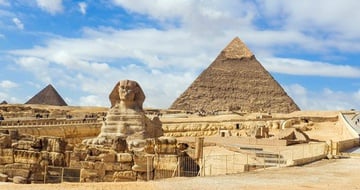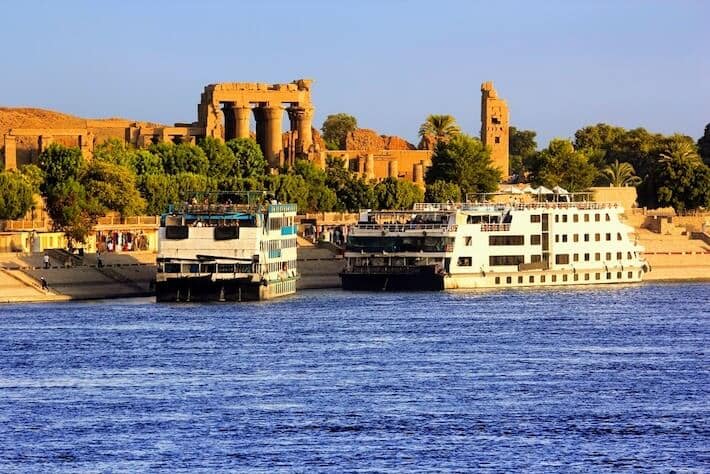Discover the Nile: Cruise Along Egypt's Lifeline and Experience the Rich History

I. Introduction
The significance of the Nile River in Egypt’s history
The Nile River has played a crucial role in shaping Egypt’s rich history and civilization. It is often referred to as the lifeline of Egypt as it has provided a source of water, transportation, and fertile soil for thousands of years. The ancient Egyptians relied on the Nile for agriculture, which allowed their civilization to flourish. The river also served as a trade route, connecting various regions and facilitating cultural exchange. Today, the Nile River continues to be a vital part of Egypt’s identity and a major tourist attraction.
Why Nile River cruises are popular among tourists
Nile River cruises have gained immense popularity among tourists due to the unique experience they offer. Here are some reasons why Nile River cruises are a favorite among travelers:
1. Unparalleled Scenery: Cruising along the Nile allows tourists to witness the breathtaking beauty of the river and its surrounding landscapes. From the lush green banks to the ancient temples and villages, the scenery along the Nile is truly mesmerizing.
2. Historic Attractions: The Nile River is lined with numerous ancient temples, tombs, and historical sites. During a cruise, tourists have the opportunity to visit iconic landmarks such as the Temple of Karnak, Valley of the Kings, and Luxor Temple, among others.
3. Immersive Cultural Experience: Nile River cruises not only offer a chance to explore Egypt’s ancient history but also provide a glimpse into the local culture and traditions. Travelers can interact with the locals, visit local markets, and indulge in authentic Egyptian cuisine.
4. Comfort and Luxury: Nile River cruises come in various packages, ranging from budget-friendly options to luxurious 5-star accommodations. Travelers can enjoy the comfort of well-appointed cabins, onboard amenities, and top-notch service throughout their journey.
5. Convenience: A Nile River cruise eliminates the need for multiple hotel bookings and long-distance travel between attractions. The cruise ship serves as a floating hotel, allowing tourists to visit multiple destinations along the river without constant packing and unpacking.
Whether you are a history enthusiast, nature lover, or simply seeking a unique travel experience, a Nile River cruise offers an unforgettable journey through Egypt’s fascinating past and present.

II. Cairo: Starting Point of the Nile Journey
Cairo serves as the starting point for a memorable Nile journey. Before embarking on the cruise, take the time to explore the city’s iconic landmarks and immerse yourself in its rich history. Cairo is known for its bustling streets, ancient sites, and vibrant culture.
Exploring Cairo’s iconic landmarks before embarking on the cruise
Some of Cairo’s must-visit attractions include:
- The Giza Pyramids: Explore these magnificent ancient structures and marvel at the Great Sphinx nearby.
- The Egyptian Museum: Home to a vast collection of ancient Egyptian artifacts, including the treasures of Tutankhamun.
- Khan el Khalili: Dive into the vibrant local culture at this bustling market, where you can shop for unique souvenirs and experience the flavors of Egyptian cuisine.
Highlights of the city and its connection to the Nile
Cairo’s connection to the Nile is deeply rooted in its history and culture. The city has thrived for centuries thanks to the Nile’s fertile banks, which provided a lifeline for agriculture, transportation, and trade. The Nile also played a crucial role in the construction of iconic landmarks such as the Giza Pyramids, as the river served as the main transportation route for the huge stone blocks used in their construction.
Embarking on a Nile cruise from Cairo allows you to witness firsthand the beauty and significance of this majestic river. From the bustling cityscape of Cairo to the serene landscapes along the Nile, exploring Egypt’s lifeline will provide a captivating journey through time and history.

III. Luxor: The Ancient Capital of Thebes
Luxor was once the capital of ancient Egypt and is now a treasure trove of historical sites and archaeological wonders. Located on the east bank of the Nile River, Luxor offers a glimpse into the rich history and culture of ancient Egypt. Here are some must-visit attractions in Luxor:
Visiting the Luxor Temple and Karnak Temple Complex
The Luxor Temple is a magnificent temple complex that was dedicated to the gods Amun, Mut, and Khonsu. It is beautifully preserved and features stunning statues, obelisks, and intricate hieroglyphics. The Karnak Temple Complex, located just north of Luxor Temple, is an expansive site that includes several temples, pylons, and obelisks. Both temples offer a fascinating insight into the religious and architectural achievements of ancient Egypt.
Exploring the Valley of the Kings and Valley of the Queens
The Valley of the Kings is a burial site for pharaohs and powerful nobles of the New Kingdom period. It is home to magnificent tombs, including the tomb of Tutankhamun, which was discovered by Howard Carter in 1922. The Valley of the Queens, located nearby, is the final resting place of queens and royal children. These valleys are a must-visit for history enthusiasts and offer a unique opportunity to explore the ancient tombs and learn about the Egyptian afterlife beliefs.
In Luxor, visitors can immerse themselves in the history and grandeur of ancient Egypt. It’s a destination that should not be missed for those seeking a truly enriching and awe-inspiring experience.

IV. Aswan: The Gateway to Lake Nasser
Aswan is a vibrant city located on the banks of the Nile River in southern Egypt. It is known as the gateway to Lake Nasser and offers a unique blend of history, culture, and natural beauty. Here are two must-visit attractions in Aswan:
Exploring the Philae Temple and the Unfinished Obelisk
The Philae Temple is an ancient temple dedicated to the goddess Isis. It was relocated to Agilkia Island after the construction of the Aswan High Dam, where it stands today as a mesmerizing UNESCO World Heritage site. Visitors can explore the temple and marvel at its stunning stone carvings and impressive architecture.
The Unfinished Obelisk is another fascinating historical site in Aswan. This massive obelisk, carved from pink granite, was abandoned during construction due to a crack. It provides a unique insight into the ancient techniques used to create these monumental structures.
Enjoying a felucca ride along the Nile River
One of the best ways to experience the beauty of the Nile River is by taking a traditional felucca sailboat ride. These wooden sailboats offer a peaceful and relaxing journey along the river, allowing you to soak in the breathtaking scenery and enjoy the gentle breeze. It’s a perfect opportunity to unwind and immerse yourself in the natural wonders of Egypt.
Aswan has so much to offer for a Nile River cruise, from its ancient temples and historical sites to its picturesque landscapes. It’s a destination that will truly make your journey along the Nile an unforgettable experience.

V. Edfu and Kom Ombo: Temples Along the Nile
When cruising along the Nile, you will have the opportunity to visit two remarkable temples – Edfu Temple and Kom Ombo Temple. These ancient structures hold significant historical and architectural value, showcasing Egypt’s rich history and culture.
Discovering the well-preserved Edfu Temple
Dating back to the Ptolemaic period, Edfu Temple is dedicated to the falcon-headed god Horus. It is one of the best-preserved temples in Egypt and offers a fascinating glimpse into ancient Egyptian religious practices. The temple’s impressive entrance pylon and intricate reliefs provide insight into the rituals and ceremonies conducted in the temple.
Exploring the unique dual temple of Kom Ombo
Kom Ombo Temple is a unique attraction as it is a dual temple dedicated to two gods – Sobek, the crocodile god, and Horus, the falcon-headed god. The temple’s symmetrical design and detailed reliefs make it a captivating sight. It also houses a crocodile museum, showcasing the mummified remains of these sacred creatures.
Both Edfu Temple and Kom Ombo Temple offer visitors a chance to immerse themselves in Egypt’s fascinating history and explore the wonders of ancient Egyptian architecture.
